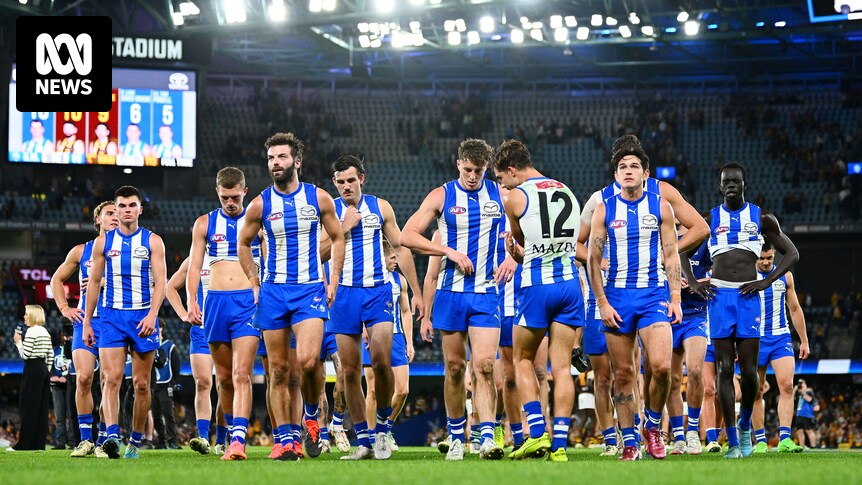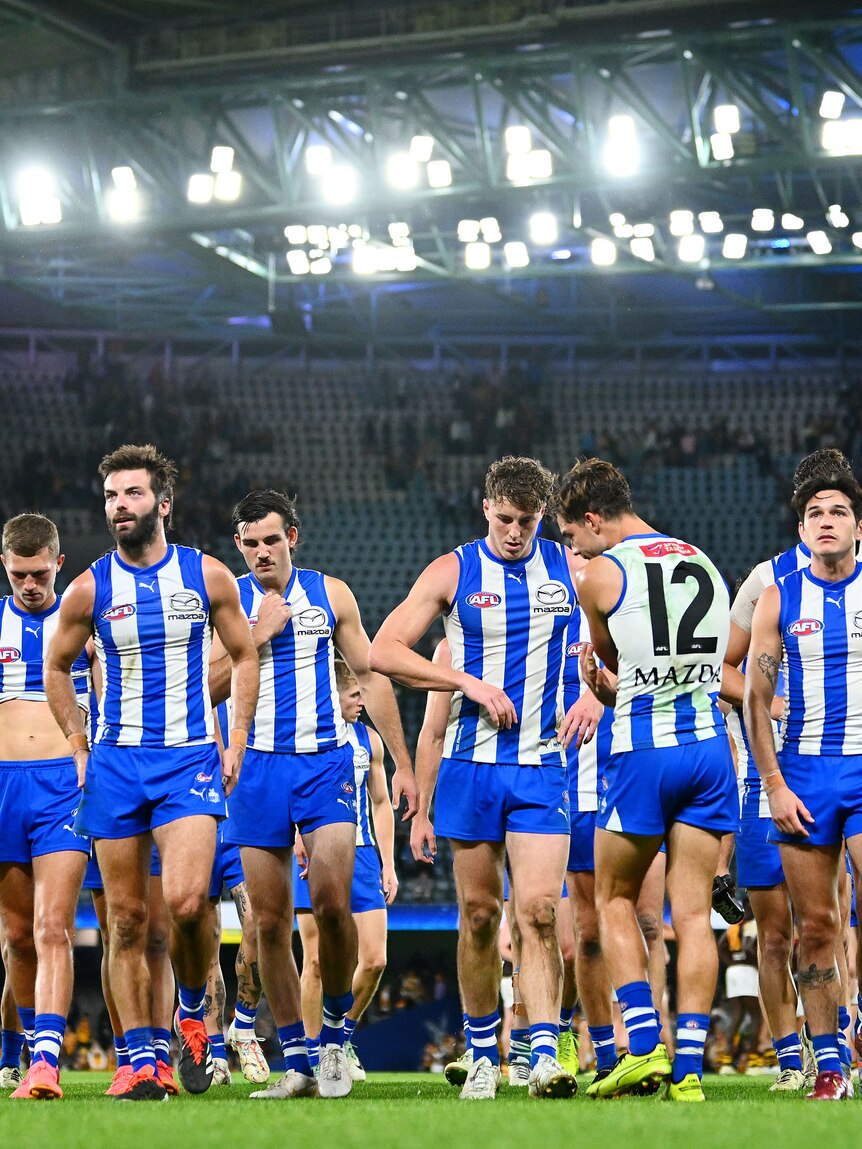
Sometimes truths in the sporting world are whispered quietly, and sometimes they are said aloud.
This week Craig McRae didn’t mince his words when on FoxFooty’s AFL360.
“There’s no way that you could look at the draw and say it’s fair anywhere. Everyone understands it. It’s just ‘which bit is yours (your advantage)’. That’s reality, isn’t it?”
For much of football’s long and storied history, the time of football was largely constant — Saturday afternoon.
The first midweek matches for premiership points happened in the league’s first season in 1897 on the date of the Queen’s Diamond Jubilee. Public holidays were the main reasons for the early weekday games in the early decades.
This regular schedule made it easy to follow your team every week, aside from knowing what ground a game was being played at.
This significantly helped players in the semi-professional era when they still had day jobs.
After experimentation with midweek, and night-time football, media executives and the VFL started to experiment more with the fixturing of proper league games.
In 1980 regular standalone Sunday afternoon games were introduced via games held at the SCG. Playing in Sydney provided the VFL a convenient end-run around the VFA’s government-backed grip on Sunday fixturing.
Friday night footy, pioneered in 1983 by the Swans is now perhaps the most commercially coveted fixture available.
Friday was the last weekday to feature a league game, but has since become a core part of the footy week. By the late 1980s all teams were regularly playing footy on Fridays.
Thanks to roaming public holidays and invented occasions like Anzac Day Eve, no day of the week is fully off-limits.
In the 2024 AFL season football will be played on at least six of the seven days of the week across 21 different start times.
The introduction of all these time slots has introduced new considerations for footy staffers — condensed and elongated preparations. This season sees more short breaks than ever before. These include five and six-day turnarounds — think Sunday to Friday being two games in six days. They also include multiple six-day turnarounds and batches of condensed games.
This is how teams prepare for the short week, and the impact it has on your team’s chances.
The footballing week
To work out how a short week can affect the preparation of a team going into a game, a better idea of a normal footballing week is required.
Richard Little, a former Essendon staffer and current data intelligence manager at the Victorian Institute of Sport, is across how clubs usually prepare for a week of football.
“Depending on the club, a seven-day break schedule would potentially look something like this:”
“Some clubs flip the sessions three days prior to the game with the ones two days out.”
Little stresses that this is dependent on the game and training loads before that week and the week’s scheduled ahead.
“Because the fixture is known for the first 15 rounds, these loads will have been planned well in advance,” Little adds.
“The skill acquisition aspect of training is generally planned loosely with specific drills dropped into a template as needed. So, it might be that a three or four week block is focused on defence but other areas would still be included. This is dependant on the coaching philosophy but it could be that there’s more work done on maintaining strengths or fixing weaknesses.”
Earlier this season Collingwood struggled with their performance coming off consecutive six-day breaks.
“Well we started the season with six days (break), six days (break), six days (break). We didn’t realise parts of our game were so far off,” McRae explained.
“So when you actually get a deeper breath you get to work on those things. You get to train some habits and change those focus areas.”
This ability to adjust on the fly is key to football clubs being able to right the ship midway through the season. It’s often why teams struggle to adjust the game plans on a wholesale basis until the bye rounds.
Shorter time frames between the games also mean the ideal schedule is adjusted.
“A compressed schedule is going to mean lighter training loads overall as the games themselves will provide the majority of the physical load,” Little articulates.
“On a six-day break, one of the post sessions will likely be merged with another and the main session will have reduced load. On a five-day break, individual craft or recovery skills are likely dropped and the main session is drastically reduced. Sometimes that’s only a couple of drills in those situations.”
Surprisingly, shorter breaks on their own don’t have a direct impact on game results. Emerging football analyst Emlyn Breese of CreditToDuBois.com has researched how these short breaks have affected results in recent years.
“It’s hard to identify the performance impacts of a short break in isolation. The typical things you’d look at as indicators of effort and energy like tackles and pressure acts — teams aren’t performing noticeably below their season average off a short break,” Breese told ABC Sport this week.
Breese has analysed outcomes against predicted performance based on how strong a team is expected to perform. He has used the predicted match results as calculated by James Day, creator of the blog Plus Six One and co-creator of the football statistics package FitzRoy as a baseline.
“When a side has two days less rest than their opponent they are likely to perform just under a goal worse than expectation when they are the home team, and about half that when they are the away team. They’re not big numbers on the surface, but when you’re looking at hundreds or thousands of results it suggests there’s something there.”
There’s also more extreme breaks — often caused by byes. Usually they have minimal impacts, with one exception.
“Teams coming off a bye playing away against a home side without a bye have performed, on average, a goal below expectation. Coaches talk all the time about just how hard it is to win a game of footy — I think it’s an example of the cumulative effect of just one more thing that takes the team out of their normal routine.”
It must be wearing off
It’s not only one match of short turnarounds that matters. Often teams have several shorter breaks compounding on each other – especially when compared to their opponents.
In high-performance terms, this is the difference between the acute and the chronic.
“The acute to chronic ratio has been a consideration for a while. The actual ratio isn’t necessarily that important but the idea is that having a high acute load compared to the chronic load exposes the athlete to an increased risk of injury,” Little adds.
“Generally the acute period is seven days, while chronic can be 21, 28 or even 35 days. Players can be managed individually as well, so might come out of specific drills or sessions or have extra sessions prescribed,” Little explains.
“Some can’t tolerate two sessions in two days so they need to be programmed differently as well.”
When looking at performance and changes over longer periods, Breese notes that some of the same factors are present.
“The benefit of getting a couple of extra days rest continues on past the first game — including into four and five game runs. Extra days to rest, plan and recover tend to make a difference in the medium term,” Breese states.
Breese has also looked at the number of changes a side makes in these short turnarounds compared to normal games.
“On average there’s around two and a half selection changes per team from one round to the next. When you get to the extreme ends of a schedule — your third game in 11 days, your fourth in 17, your fifth in 23 — that jumps up to around four changes. It tails off back to the average pretty quickly though.”
This year’s favourite teams
These impacts of long and short breaks are felt differently across the league this season.
It’s the two South Australian teams facing the most short breaks in total. Essendon sees the least short turnarounds this year — a boost to their potential finals hopes.
While Adelaide cop a lot of short breaks, they’re rarely at a rest day disadvantage against opponents. This year, the short break straw for head-to-head breaks has gone to Hawthorn. Sydney has the most regular recovery edge at the other end of the equation.
Given that the last third of the fixture has yet to be set, it remains to be seen if the AFL will look to even out this aspect of the fixture.
One thing is clear though — the amount of compressed scheduling will likely increase in coming years.
The new Collective Bargaining Agreement allows for three five-day breaks per club per season — which would be a significant increase across the board from this year.
Fans and players alike will have to get even more used to the short break, and any impacts from it.
Sports content to make you think… or allow you not to. A newsletter delivered each Saturday.










